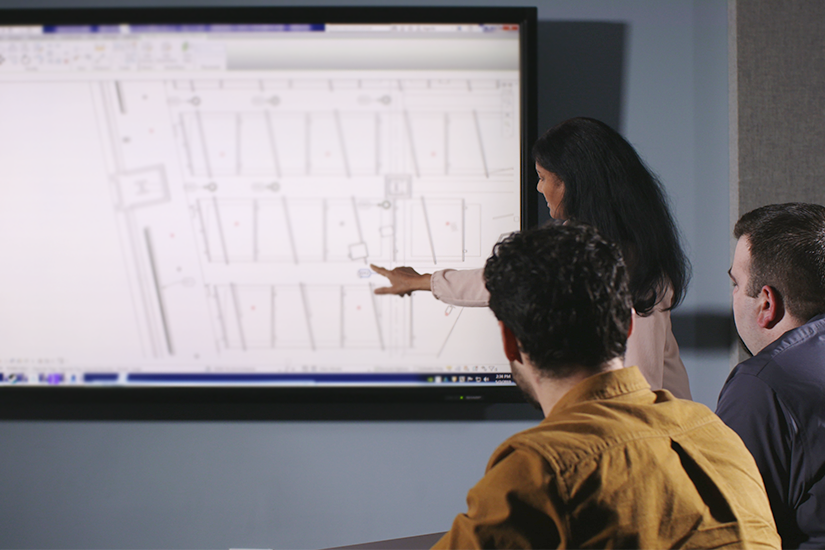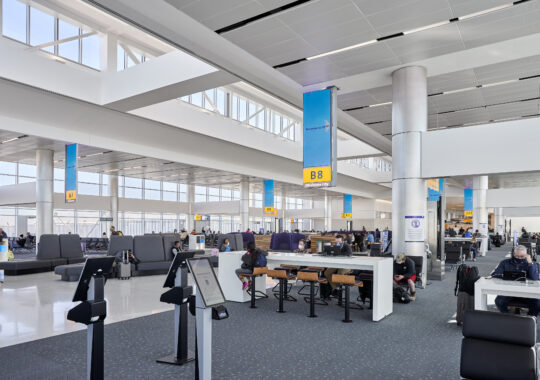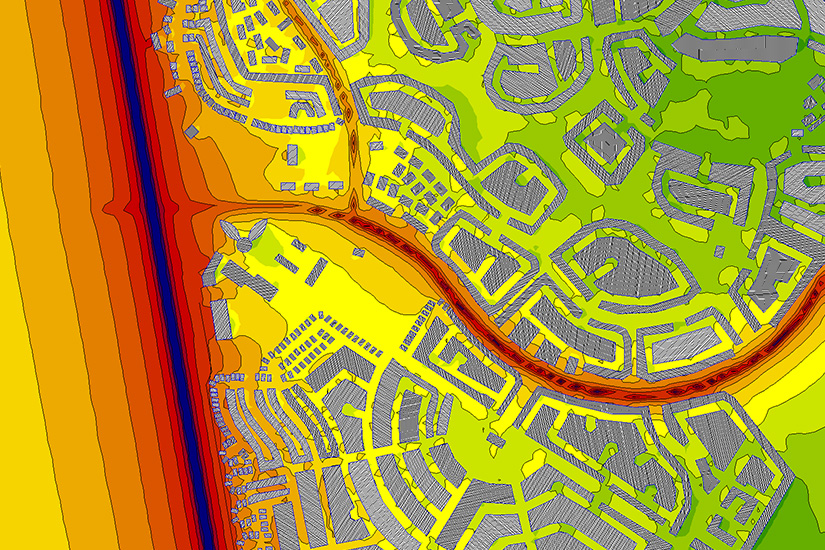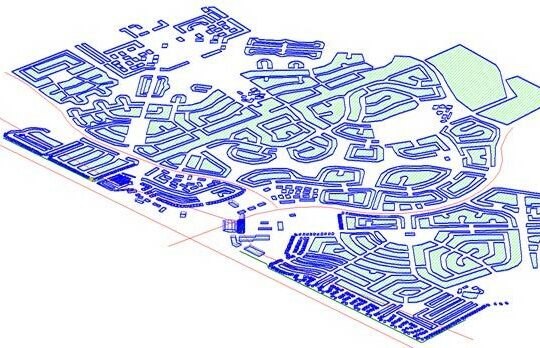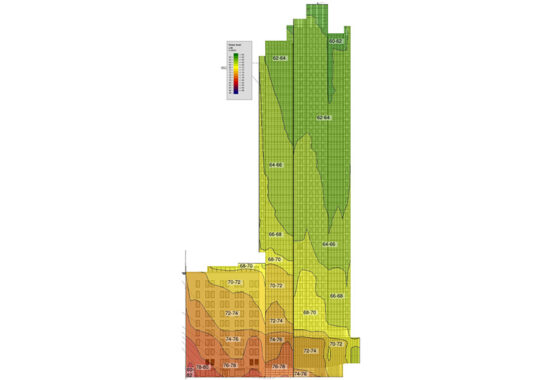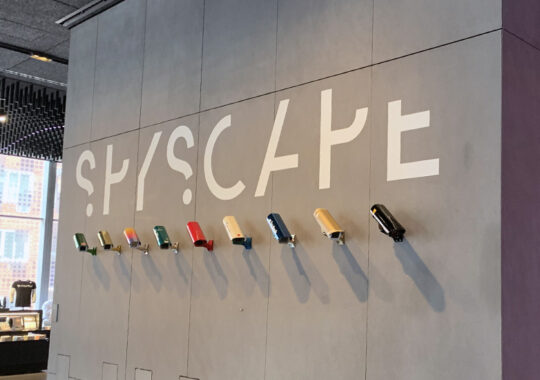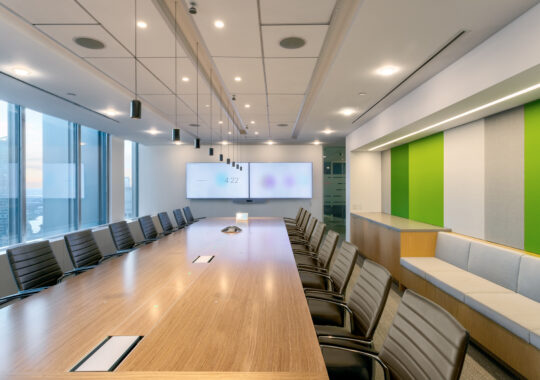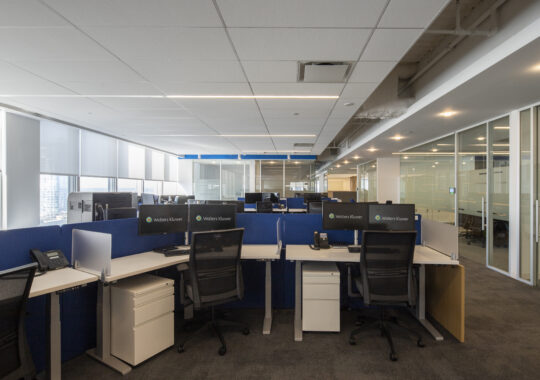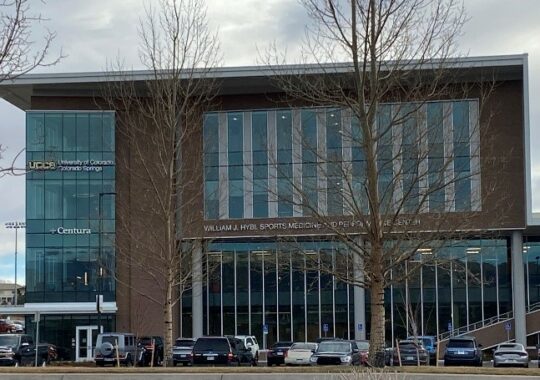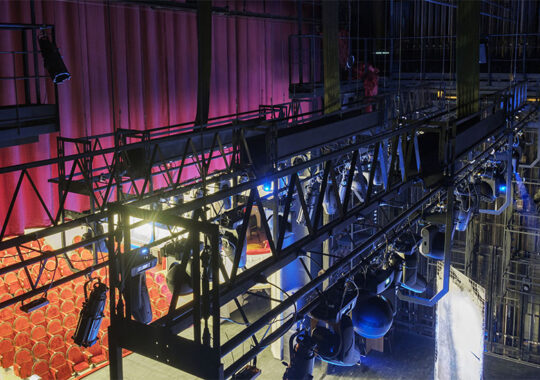Acoustics is the physics of how sound travels and is perceived. While it’s not something that is tangible, it is one of the most important components when designing a space, and one should plan for acoustics at the very beginning of the design process. If you are not a professional singer or sound engineer, likely your first thought upon entering a building is not “wow the acoustics in here are fantastic!” However, anyone who can hear has at some point in their life been annoyed or distressed by a sound or noise that is just too loud to ignore, or, alternatively, found that “these walls are paper thin”. Acoustics is not a tangible element, like a high tech security system or large video wall, and can often be overlooked during planning and design phases of facilities. Intangible as it may be, acoustics are extremely important to plan for before construction, incorporating within your design, to avoid costly change orders or post-construction retrofits.
When in the design phase of a new project, time and money are key priorities, and the main reason that an owner should consider including an acoustics consultant at this stage. The cost that it would take to fix a problem that could have been solved before it even occurred is much higher than planning. Here are some costly outcomes that can happen if you do not take acoustics into account in the design phase of a project.
Monetary Costs
The first cost is the most obvious: there is a financial cost to solve the structural issues by rebuilding or fixing a space. When an architect has already designed the space and begun construction phases, the cost to rebuild the space can be extremely expensive. When an acoustic issue arises, such as an echo in a room that should be noise sensitive, an acoustic consultant should be hired to assess sound levels in the space and mitigate the issue. Oftentimes, our acousticians find that there can be many contributing factors to an issue and therefore not just one solution. This on top of the cost of reconstruction or demolition can be daunting to someone with limited time and budget to quickly fix an acoustic issue. However, starting this process as a preventative measure rather than a reactionary process saves time, money, and stress. Our consultants can accurately measure acoustics to assist the design of a build be both aesthetically pleasing and practical.
Business Costs
Another cost is more long-term: losing business, time, and reputation. The main goal of a new space is to add value to the stakeholders, whether that’s the owners, the tenants, or the surrounding community. However, if the space itself does not prove to be valuable or useful, not only is there money lost but business and reputation are tarnished. Take for example a property owner who wants to build an apartment building but does not account the amount of noise that can travel throughout the building before constructing the building. As soon as tenants move in and notice the lack of noise control and sound mitigation, simple fixes may not remedy resident complaints. Once aware of acoustical deficiencies within the building, residents can often become more critical and sensitive to noise issues and become less likely to satisfy once the complaints have started. Having a knowledgeable acoustical consultant included throughout the design can identify and mitigate these issues, maintaining the owner and design team’s reputation. This type of situation can happen anywhere from residential, to corporate, to retail, to healthcare spaces. The physical space that a company either sells or works from must be acoustically secure to keep clients happy. Compared to a monetary cost, the cost of business is much more long-term and harmful if one skips the acoustic step in the design phase.
Security Costs
A common issue that occurs when a project doesn’t have the acoustic foundation needed could lead to a security and confidentiality risk. The security of a building or space is much more than locks and bolts, it also consists of sound isolation. Every market sector requires some form of acoustic privacy, but some more than others, for instance healthcare facilities, classified facilities, and learning environments. Think about a meeting that would typically happen in a boardroom, maybe a conversation about budgets, a performance review, or a discussion of trade secrets. Now imagine the conversations could be heard from the hallway or reception area so anyone walking past would eavesdrop without even trying. This then leads to confidentiality risks without an easy fix or solution that can damage the integrity of a business.
Knowing how sound travels is particularly crucial in an office space to protect confidential discussions. The design of an office can completely alters a business model in terms of meetings, client relations, and the workplace environment. If a company is not aware of the security risks a space has concerning sound, not only will the business be affected but so will its employees. Making sure spaces that will house sensitive conversations are quiet to the outside is essential for a company to conduct business and uphold confidentiality.
While it may seem like avoiding the initial cost of hiring an acoustician on a project is feasible, it will cost a lot more than money to skip over an integral part of the design process. When acoustics are an afterthought, it becomes difficult to backtrack and identify and correct a problem when it could have been a priority at the beginning of the building process; the solution is often multifaceted, and we try to come in with a holistic approach. Our acoustics consultants manage the process and expectations. This means that they identify the problem and find a practical solution while being transparent with the outcome. When a project is being designed, they are advocates for functionality and auditory satisfaction. A space should not just be designed for occupancy. It should be designed for comfortability, versatility, and longevity and acoustic consultants at SM&W do their due diligence to find a balance between the vision and efficiency of a project. The value that we create is watching for acoustic issues, advocating for any acoustic concerns, and seeing a project through to completion and use.
